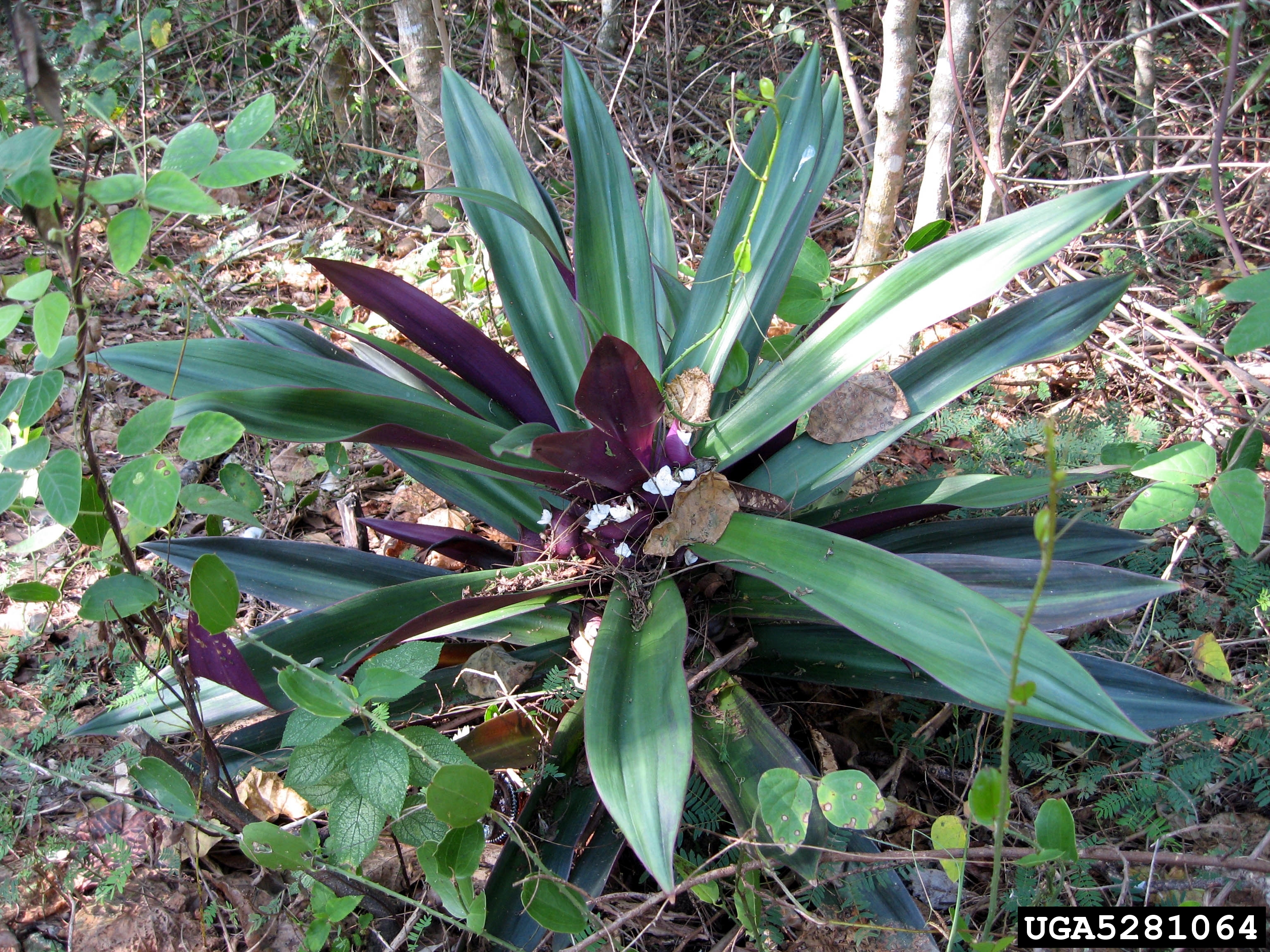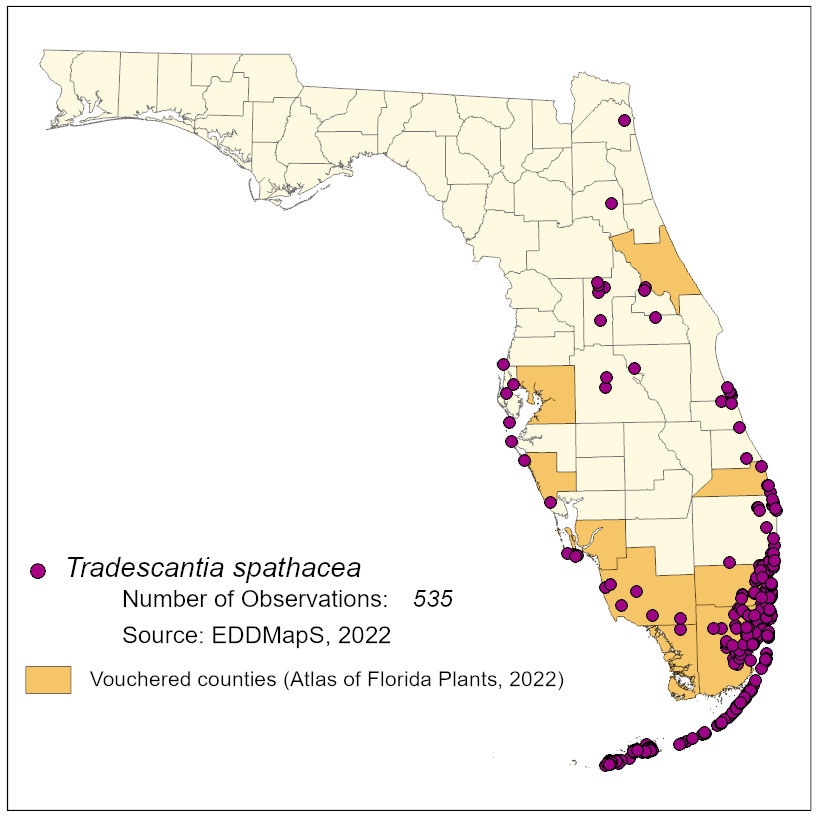Common Name: oyster plant
Family: Commelinaceae
Common Synonyms: Rhoeo discolor, Rhoeo spathacea
USDA Hardiness Zone: 10b-11
Growth Habit: Perennial herb
Origin: Mexico, Central America, and the Caribbean
FISC Category: 2
FDACS Listed Noxious Weed: No
Introduction Date: Before 1933
IFAS Assessment:

Perennial herb with short, stout stem nearly hidden by overlapping leaf bases. Forms clumps by offshoots from fleshy rootstock. Leaves spreading-erect, closely overlapping in spiral pattern. Blades broadly linear, sharp-tipped, waxy, stiff, somewhat fleshy, 1-?30 cm long and 2.5-8 cm wide, upper surfaces dark green or green with pale yellow stripes, lower surfaces usually purple. Flowers small, white, clustered within a folded, boat-shaped bract (spathe) 3-4 cm long, short-stalked from leaf axils. Three petals, stamens 6, with hairy filaments. Fruit a 2-seeded capsule, in clusters within the bract.
Shady areas in ruderal habitats as well as coastal hammocks and shell mounds
Seeds thought to be dispersed by wind.

NA
Dave's Garden. 2014. PlantFiles: Moses-in-a-basket, Tradescantia spathacea. http://davesgarden.com/guides/pf/go/650/. Accessed on June 20, 2014.
Langeland, K.A., H.M. Cherry, C.M. McCormick, K.C. Burks. 2008. Identification and Biology of Non-Native Plants in Florida's Natural Areas-Second Edition. IFAS Publication SP 257. University of Florida, Gainesville, Florida.
Langeland, K.A., J.A. Ferrell, B. Sellers, G.E. MacDonald, and R.K. Stocker. 2011. Integrated management of non-native plants in natural areas of Florida. EDIS publication SP 242. University of Florida, Gainesville, Florida.